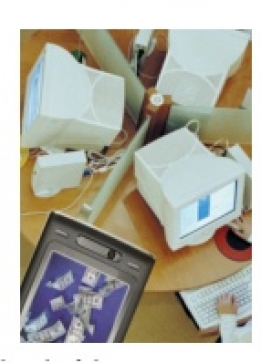Smooth Exchange - Telecom deployments streamline Saraswat Bank's operations

-
Background
In 1918, the Saraswat Co-operative Banking Society was founded with the objective of providing temporary relief to its members to help them in repayment of debt and in meeting expenses such as those for medical treatment. The society was converted into a full-fledged urban cooperative bank in 1933.
Over the past two decades, the bank has witnessed steady growth, and today has a network of 173 fully computerised branches covering six states and providing 24-hour services through ATMs in 57 locations.
Legacy systems
To start with, the company's IT and telecom infrastructure comprised a network of telephone lines and intercoms, leased lines and a dial-up internet connection. All the computers were connected to the main server and were primarily used for surfing the net and to access email.
Leased lines were used to consolidate branch office connectivity and enabled the bank to stay connected with its network of offices. Since the bank had heavy traffic and bandwidth-hungry applications, the leased lines helped prioritise the traffic.
Thus, while the bank's telecom infrastructure had specific, defined functions, it was fairly basic. There was no attempt to innovate or upgrade, as the bank operated on a small scale at the time.
Over the years, however, as its business grew and expanded to different locations, the management realised that its IT and telecom infrastructure was restricting operations.There was no common platform to share information and data amongst the branch offices, and the production facilities and production process itself were very cumbersome.Everything was manually operated, leading to delays and confusion.
The technology was also rapidly becoming outdated, leaving little or no room for the bank's many applications to grow to the level of robustness required for future growth.
The shift
The basic challenge for the company lay in identifying cost-effective solutions that also offered scope for innovation and further development as the requirements changed over time.
To achieve this, the bank took small steps initially. It first strengthened its basic communications backbone by adding ISDN lines and virtual private networks (VPNs). It opted for ISDN lines to enable smooth video and audio streaming without any disruption between its branches. The medium provided the organisation with higher bandwidth, which saved time while downloading data, and accommodated applications that required greater bandwidth.
Going a step further, the bank opted for enterprise grid computing technology.It felt the need to bring together multiple channels onto an integrated business management platform, ensuring security and 24x7 operations for its core banking application. Thus, it opted for Oracle's Database 10g and Real Application Cluster (RAC) solutions.
This enabled the bank to continue transactions within 15 hours of torrential flooding, at a time when other institutions were out of operation for up to three days.
Consolidating disparate systems onto a single centralised platform has resulted in cutting the daily closing time by automating various manual processes and improved productivity. It has, moreover, allowed 50 per cent of its financial workforce to be redeployed for tasks of higher value.
The internet is also being used as a strategic medium to reach out to customers. The bank now offers net banking facilities to its customers, enabling them to access information regarding linked accounts, account statements, account balance, cheque status and loan options.
Customers can also avail of SMsbased banking services. These services are aimed at providing information to customers regarding their banking and demat accounts.
Using "Push" messages, the bank can keep clients informed on promotions, term deposit maturity, cheque returns, and transactions and corporate action in the demat account.
The bank also opted for VMWARE infrastructure, which converted its entire server and network infrastructure into a single-blade centre. This has helped save and enhance data centre space.
Benefits
The organisation has been able to carry out its day-to-day activities more efficiently as data and information transfers now function smoothly. It has been able to coordinate better with its branch offices and complete tasks in a timely manner. In addition, the bank has been able to reach out to customers better via its website.
By deploying Oracle's 10g platform, the bank has achieved high performance, 24x7 availability and easy scalability; it has managed to lower costs, boost productivity and improve customer service.
By upgrading its communications infrastructure at the right time, Saraswat Bank is now enjoying the advantages of a robust, flexible and cost-effective platform.
- Most Viewed
- Most Rated
- Most Shared
- Related Articles
- Value for Money: BFSI companies invest i...
- Banking on Telecom: IndusInd Bank benefi...
- Telecom Cover: Aviva upgrades IT infrast...
- Investment Gains: Telecom upgrade stream...
- Rich Returns - BFSI companies gain from ...
- Good Returns - BFSI segment benefits f...
- Investing in Networks - IDBI Capital a...
- The Right Policy: ITGI benefits from upg...
- Smooth Exchange - Telecom deployments ...
- Rising Stock - NSE benefits from telecom...
No Most Rated articles exists!!
| Your cart is empty |





